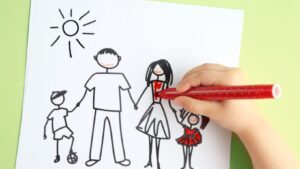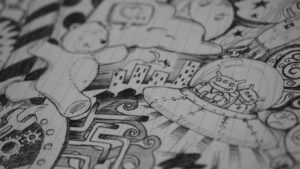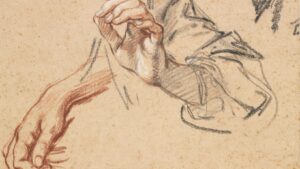The allure of cute drawings transcends age and culture, captivating hearts with their simplicity and charm. Whether it’s a whimsical sketch of a playful kitten or a colorful depiction of a fantastical creature, these drawings evoke a sense of joy and nostalgia. They not only decorate children’s book pages but also grace greeting cards, animation, and digital media for marketing cloud-based solutions, showcasing their universal appeal.
Understanding the Appeal of Cute Drawings
Cute drawings captivate a wide audience, enchanting viewers across various cultures and age groups with their simplicity and emotional pull. This section explores why these artworks hold such universal appeal on security issues and how they impact viewers psychologically and culturally.
Psychological Aspects
 Cute drawings often trigger emotional responses that are deeply rooted in human psychology. Researchers have identified that features typical of cute drawings, such as big eyes, small noses, and round faces, activate the brain’s reward system. This response isn’t just pleasing; it also evokes caregiving behaviors, which explain why images of adorable creatures or childlike figures are compelling. For instance, studies show that looking at cute images can improve concentration and careful behavior, a phenomenon beneficial in both educational and professional settings.
Cute drawings often trigger emotional responses that are deeply rooted in human psychology. Researchers have identified that features typical of cute drawings, such as big eyes, small noses, and round faces, activate the brain’s reward system. This response isn’t just pleasing; it also evokes caregiving behaviors, which explain why images of adorable creatures or childlike figures are compelling. For instance, studies show that looking at cute images can improve concentration and careful behavior, a phenomenon beneficial in both educational and professional settings.
Cultural Impact
 The cultural impact of cute drawings extends well beyond mere aesthetic appreciation. These drawings often become symbols of national identity and cultural heritage. In Japan, the concept of ‘kawaii,’ which translates to ‘cuteness,’ is an integral part of both contemporary and traditional culture, influencing everything from daily communication to business strategies. Elsewhere, characters like Mickey Mouse and Snoopy have transcended their original markets to become global icons, representing more than just entertainment but also carrying cultural values and nostalgia. Such characters serve as bridges between generations and across global communities, illustrating the powerful role that cute drawings play in cultural exchange and identity formation.
The cultural impact of cute drawings extends well beyond mere aesthetic appreciation. These drawings often become symbols of national identity and cultural heritage. In Japan, the concept of ‘kawaii,’ which translates to ‘cuteness,’ is an integral part of both contemporary and traditional culture, influencing everything from daily communication to business strategies. Elsewhere, characters like Mickey Mouse and Snoopy have transcended their original markets to become global icons, representing more than just entertainment but also carrying cultural values and nostalgia. Such characters serve as bridges between generations and across global communities, illustrating the powerful role that cute drawings play in cultural exchange and identity formation.
Types of Cute Drawings
Character Designs
 Character designs in cute drawings often feature exaggerated features like large eyes, small mouths, and round faces. These elements not only make the characters more appealing but also enhance their expressiveness. Popular in cartoons, children’s books, and graphic novels, these characters can range from human figures to whimsical animals and mythical creatures. For instance, characters such as those found in “Hello Kitty” or Disney’s “Mickey Mouse” showcase iconic cute aesthetics that have universal appeal.
Character designs in cute drawings often feature exaggerated features like large eyes, small mouths, and round faces. These elements not only make the characters more appealing but also enhance their expressiveness. Popular in cartoons, children’s books, and graphic novels, these characters can range from human figures to whimsical animals and mythical creatures. For instance, characters such as those found in “Hello Kitty” or Disney’s “Mickey Mouse” showcase iconic cute aesthetics that have universal appeal.
Scenic Illustrations
Scenic illustrations that fall under the cute category typically incorporate vibrant colors, soft textures, and simplified shapes. They create whimsical, serene environments that capture the viewer’s imagination. These illustrations often appear in children’s literature, animation backgrounds, and graphic art aimed at evoking a sense of peace and happiness. Examples include the soft, pastel landscapes seen in shows like “My Neighbor Totoro,” where the settings play a crucial role in establishing a gentle, inviting atmosphere.
Techniques for Creating Cute Drawings
Choosing the Right Colors
 Selecting suitable colors plays a crucial role in defining the mood and appeal of cute drawings. Pastel palettes, featuring light shades of pink, blue, or green, typically bring softness and warmth to the artwork, resonating with the essence of innocence and joy. Bright colors enhance elements that captivate attention, such as a character’s clothing or accessories, adding vibrancy without overwhelming the eye. For instance, the soft pinks and yellows in illustrations of “Peach Girl” by Miwa Ueda give the manga a youthful and tender vibe that immediately communicates its themes. Strategic color choices thus not only complement the artistic style but also significantly influence viewer perception and emotional response.
Selecting suitable colors plays a crucial role in defining the mood and appeal of cute drawings. Pastel palettes, featuring light shades of pink, blue, or green, typically bring softness and warmth to the artwork, resonating with the essence of innocence and joy. Bright colors enhance elements that captivate attention, such as a character’s clothing or accessories, adding vibrancy without overwhelming the eye. For instance, the soft pinks and yellows in illustrations of “Peach Girl” by Miwa Ueda give the manga a youthful and tender vibe that immediately communicates its themes. Strategic color choices thus not only complement the artistic style but also significantly influence viewer perception and emotional response.
Simplifying Shapes
Simplicity is key when crafting cute drawings, as simplified shapes are easier for viewers to recognize and connect with emotionally. Characters created with round, soft shapes tend to appear more approachable and cuddly, enhancing their cuteness. For example, the widely recognized “Pusheen the Cat” uses basic circular shapes to form the body and face, making it instantly recognizable to millions worldwide. This technique doesn’t just apply to characters but also to settings and items within the drawings, where complexity is reduced to create a serene and charming visual impact.



